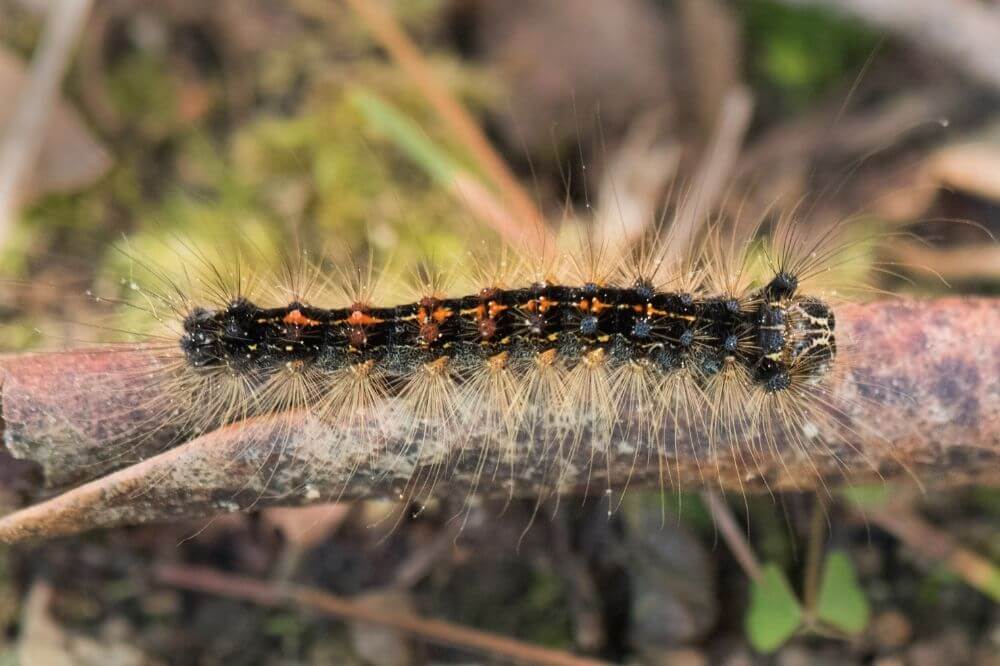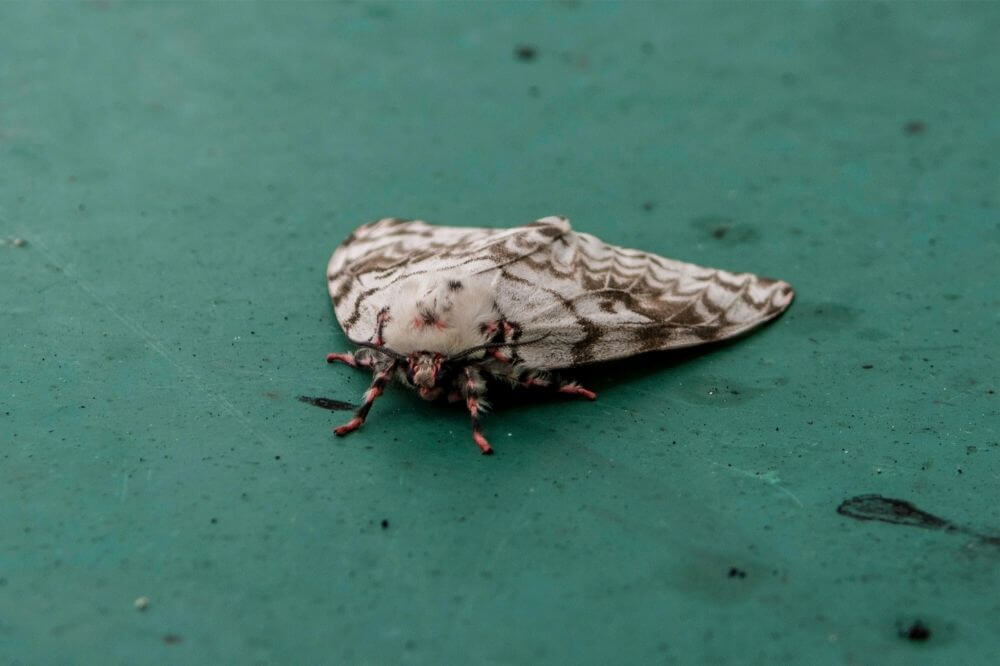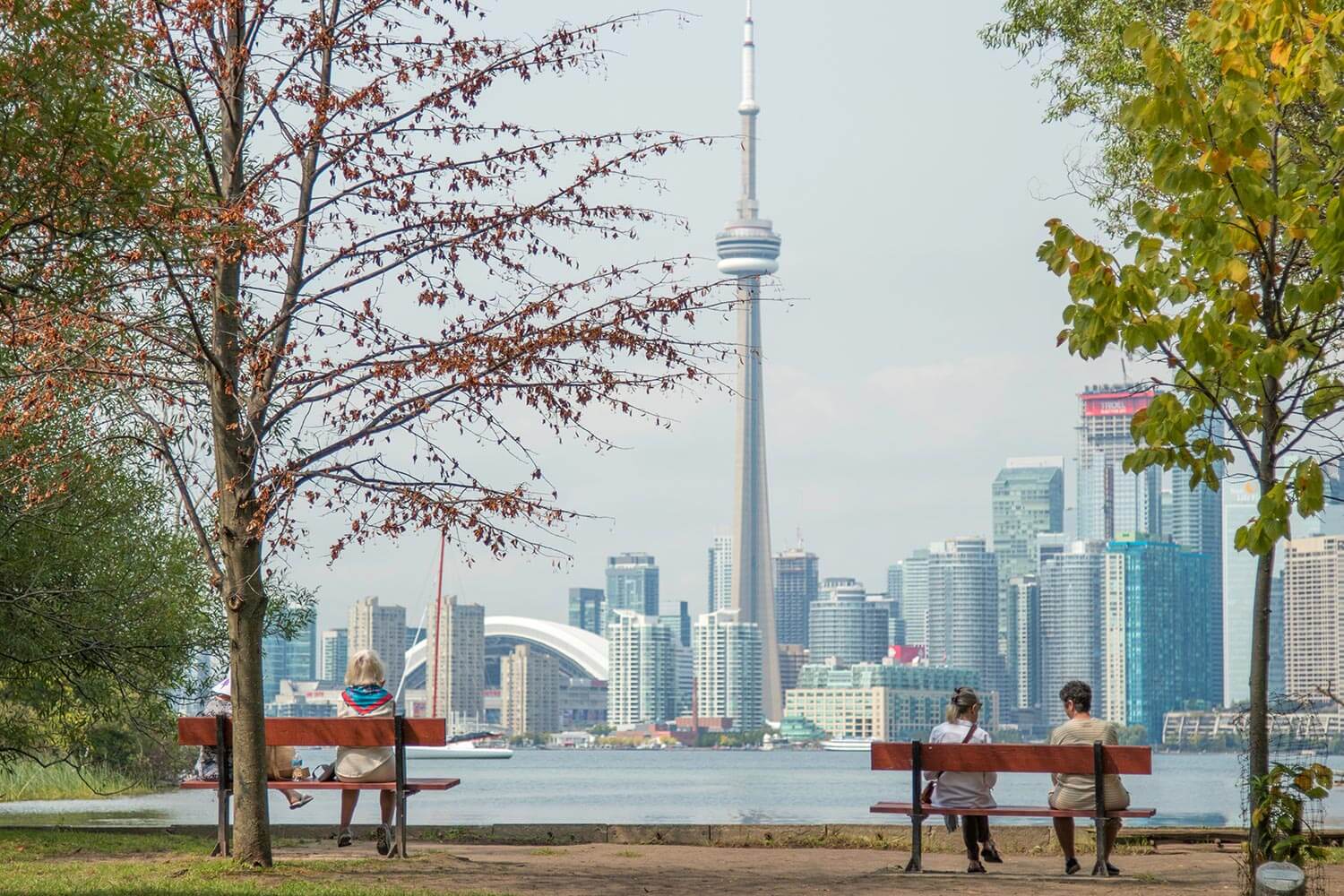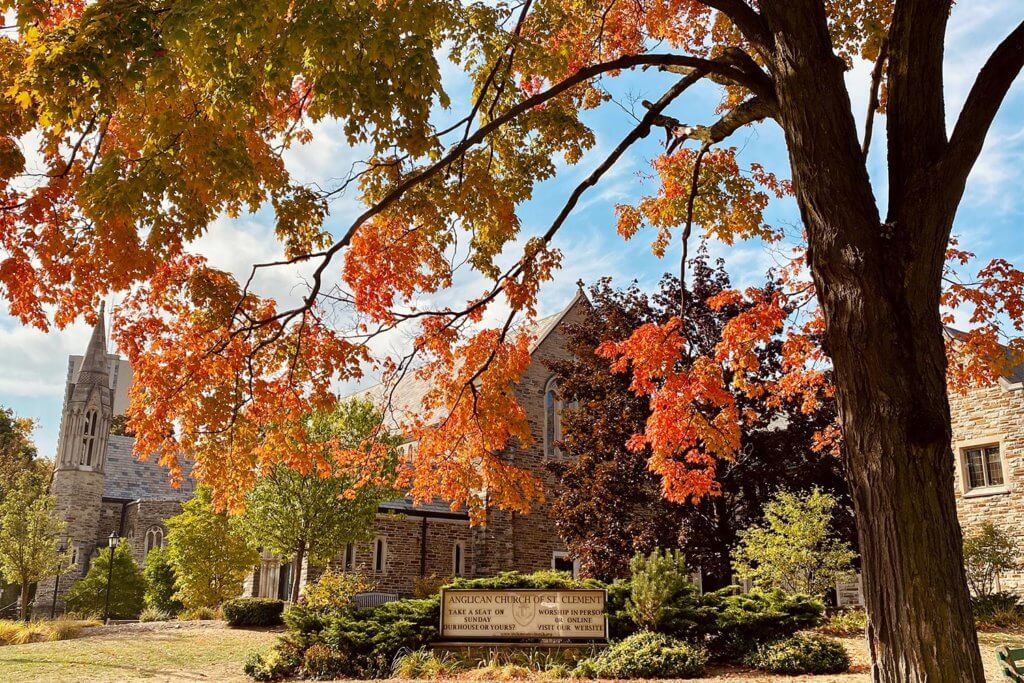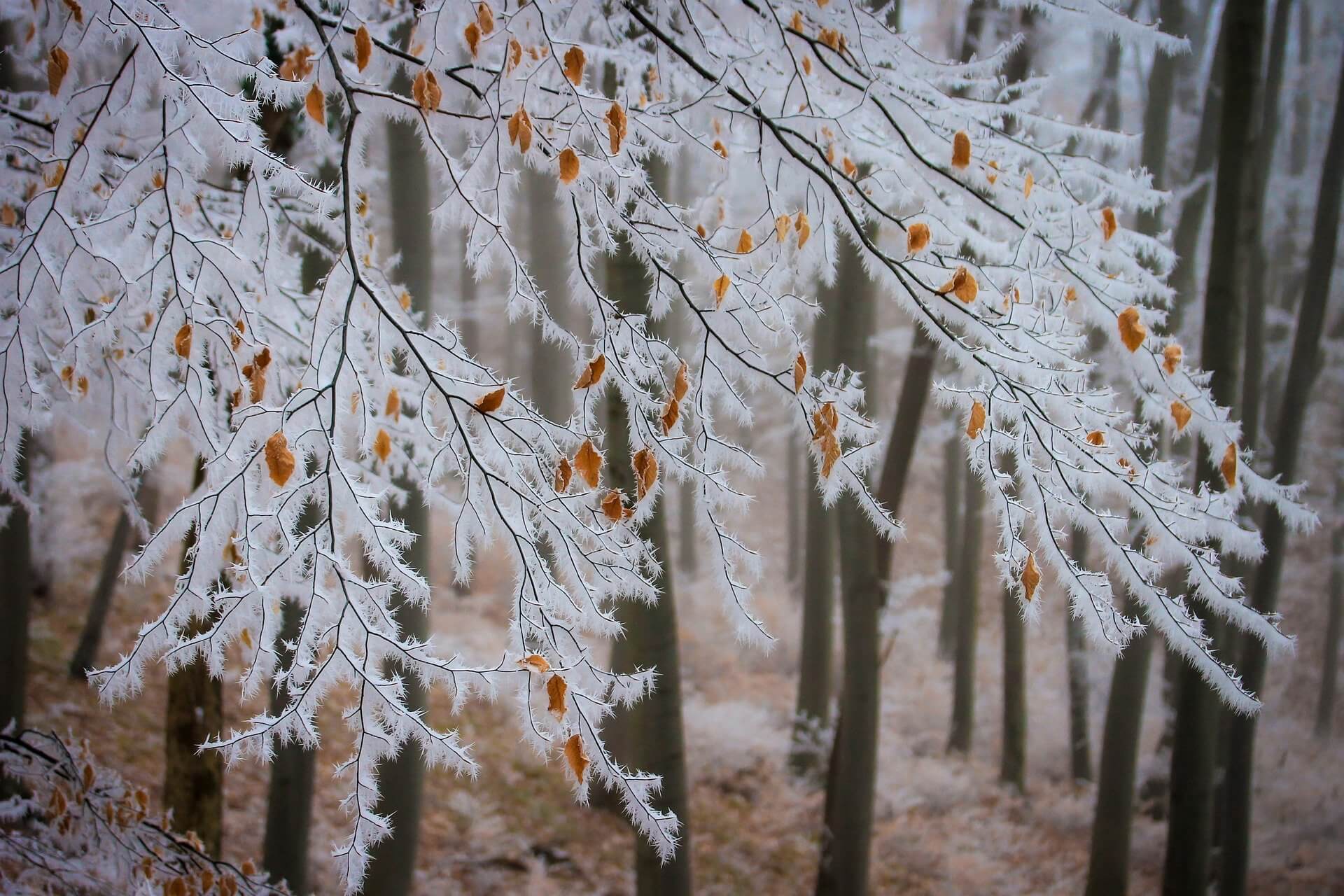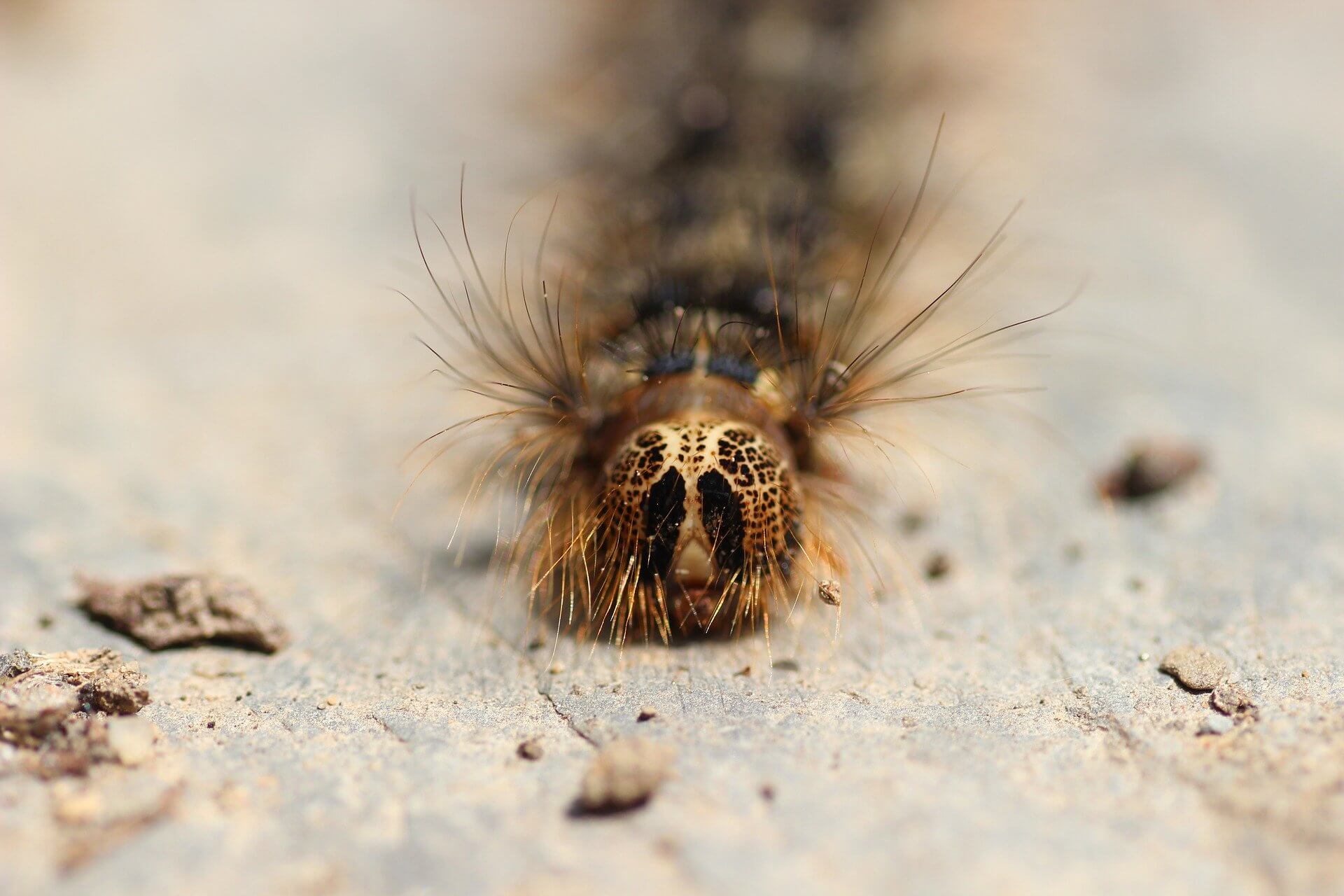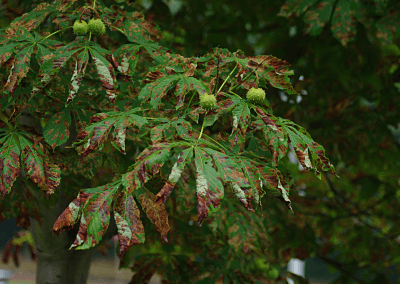Whether in forests, lining the streets, or just in our backyards, Toronto is home to many different types of trees. Because of this variety, there are many diseases, pests, and invasive species that threaten the health of our trees.
Unfortunately, leaf diseases are and always will be a fact of life for gardeners. Protect your plants by learning to recognize common symptoms and practice preventative matters to keep them healthy.
Table of Contents:
Powdery Mildew
Powdery mildew is a common fungal disease for many tree species and is easily recognized. In Toronto, the Norway maple is the most common host of powdery mildew; however, the leaf disease can affect almost any deciduous tree species. This disease is cosmetic and doesn’t kill the tree.
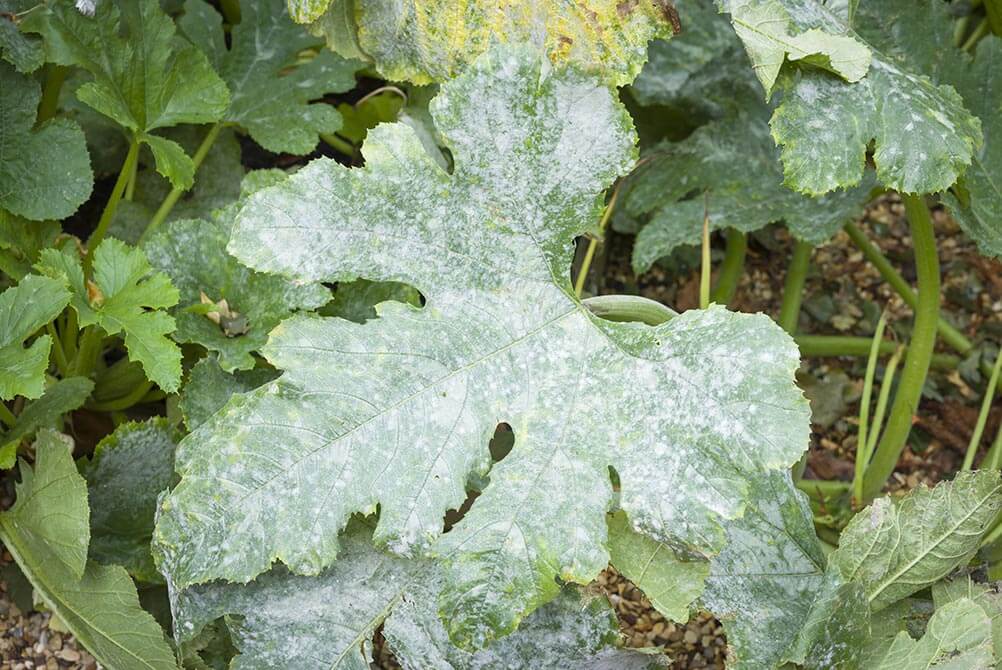
Causes & Symptoms:
A variety of closely related fungal species cause powdery mildew; each species has a limited host range, meaning powdery mildew on one type of plant will not infect the other. Low moisture soil combined with high humidity provides optimal conditions for powdery mildew growth.
The plant disease appears as a white to light grey powder on the upper surface of the leaves. It can also less commonly affect the underside of the leaves, stems, flowers, and fruits. Diseased leaves rapidly turn yellow, wither, and die.
Occasionally, the powdery mildew kills off infected leaf tissue, creating a ‘shot-hole’ effect. The growth of the plant slows considerably, and the infected leaves slowly die back and drop off.
Treatment & prevention:
As soon as you see the first signs of powdery mildew, it is important to prune and remove all infected parts of the plant. Pruning removes the powdery mildew spores and improves air circulation to help prevent an increase and spread in infection.
When pruning the infected plant, try not to shake the branches too much; mildew spores can fall onto the healthy leaves. After each cut, disinfect your pruning tools and clean up fallen debris on the ground.
Spores can also spread by rain or water splashes, so it is not a good idea to water your trees from above. Direct the water into the soil at the base of the plant. Drip irrigation and soaker hoses help keep the foliage dry and prevent the transfer of spores.
Keep plants watered and maintain soil moisture around the root system by mulching plants early in the year. Powdery mildew thrives when the plant is not receiving enough water, and mulch helps retain water. Mulch also helps prevent any spores on the ground from splashing back up onto the leaves.
To prevent powdery mildew, use a home remedy milk spray made with 40% milk and 60% water on a wide range of plants. You can spray plant leaves every 10-14 days to prevent further spread of the powdery mildew spores.
Downy Mildew
Downy mildews, unlike powdery mildew, thrives in cool, moist conditions and loves young, unhealthy, or stressed plants. Wet weather in Ontario means downy mildew can be incredibly detrimental to trees and plants like hops, potentially causing total crop loss.
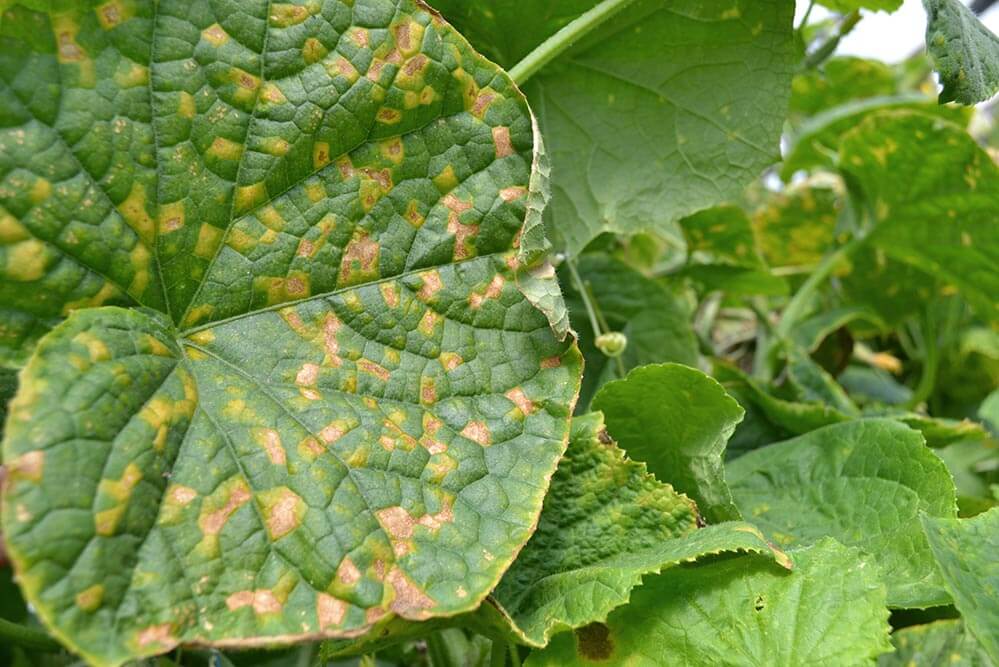
Causes & Symptoms:
Downy mildew affects a wide range of plants. It appears as yellow or white patches on the upper leaf surface and appears as light gray to purple downy growth on the underside of the plant leaf.
Some downy mildew can cause the stems to turn yellow or prevent the plant from flowering altogether and cause crop failure.
Down mildew loves cool, moist weather generally found in early spring and late fall. Spore production occurs when temperatures are below 18˚C, and relative humidity approaches 100%.
The downy masses are especially noticeable after rain or heavy humidity. As the leaf disease progresses, the leaves eventually turn brown and crispy and fall off.
Downy mildew overwinters on plant debris and in the soil. Insects, wind, rain, or garden tools transfer the fungi to new plants.
Treatment & Prevention:
To treat downy mildew, remove and destroy all infected parts of the plant as soon as symptoms are seen- this includes any foliage on the ground. It is best to destroy the entirety of severely affected plants. Keep the ground under affected plants clean to prevent the disease from spreading.
Prune or stake trees and plants and remove any weeds to improve air circulation.
Watering in the early morning gives the plants time to dry out during the day. Watering plants in the evening leads to high humidity that persists throughout the night.
Downy mildew is relatively easy to control on most trees when you use a copper spray. Begin using the treatment two weeks before the disease generally appears or when in a long period of wet weather. Or you can begin treatment when the disease first appears and repeat at 7-10 day intervals as needed.
To prevent downy mildew, avoid conditions the disease favours.
Since downy mildew likes moist conditions, avoid planting too densely and control weeds to provide good air circulation around the plants.
Rake leaves in autumn and remove them from the site to prevent the fungal infection from spreading to new plants the next growing season.
Apple Scab
Apple scab is a serious apple fungal disease that occurs every year in many parts of Canada, especially Ontario. In eastern Canada, apple scab is of economic importance. Severely infected trees become defoliated and the fruit non-marketable, decreasing chances of winter survival.
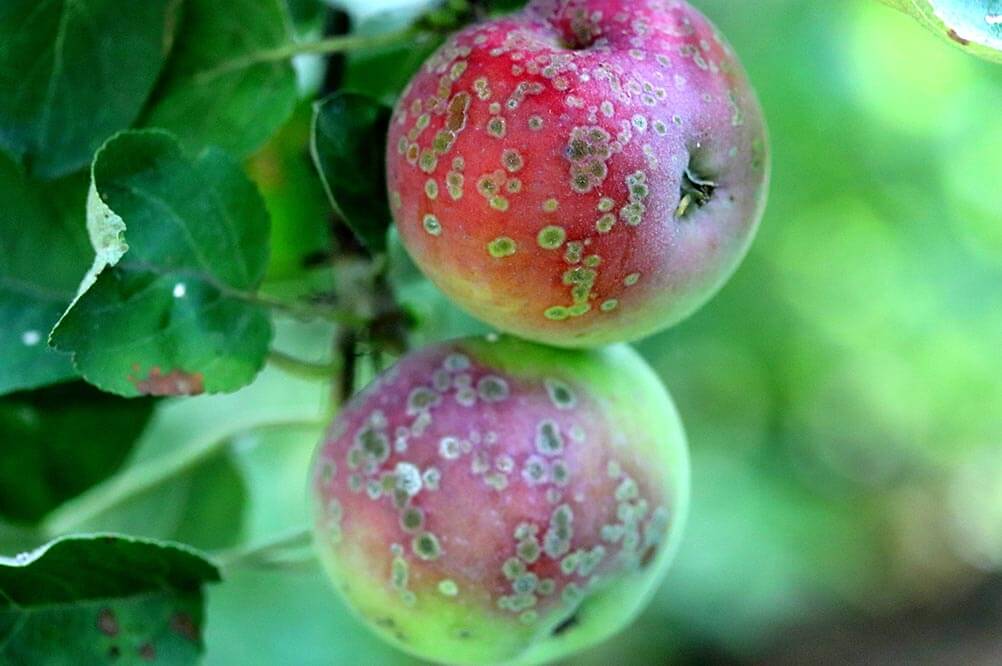
Causes & Symptoms:
Fungal disease development begins in the wet, cool weather (13˚C – 24˚C) found in spring and early summer. The fungi are carried by the wind, rain, or water splashes. During damp and rainy periods, new growth and leaves are highly susceptible to infection. The longer the leaves remain wet, the more severe the infection.
Apple scab symptoms begin as a small olive-green leaf spot. These spots can later darken to black. The infected leaves turn yellow, become distorted in shape, and drop early in the summer.
Symptoms present on the fruit are similar to symptoms found on the leaves. They start as small, dark, raised areas that become large and corky. Infected fruit becomes distorted and may crack, allowing entry of secondary diseases and organisms. Severely affected fruits may become stunted and drop early in the summer.
Treatment & Prevention:
Apple scab loves to overwinter in fallen leaves and soil. To treat apple scab, rake under trees and dispose of leaves and fruit in the fall; this helps reduce the number of fungal spores overwintering in the leaves and fruit and prevents the cycle from occurring again next spring.
Prune the tree to allow aeration, which helps the leaves dry quickly and prevents the spreading of apple scab.
Avoid overhead irrigation and water in the early morning hours to give the leaves time to dry out before infection can occur.
Spread mulch or compost under the trees, keeping it away from the trunk to cover the soil and prevent the spreading of the fungal spores from water splashes.
Rusts
Rust diseases attack a wide range of plants and are among the most dangerous fungus to attack food crops. Though each type of rust is specific to one plant or group of plants, they cause significant crop losses around Canada and worldwide each year.
Certain types of plants are more susceptible to rust fungi than others: for example, irises, hollyhocks, and edibles like beans and leek. Occasionally, grass can become infected, but this is generally not a serious problem.
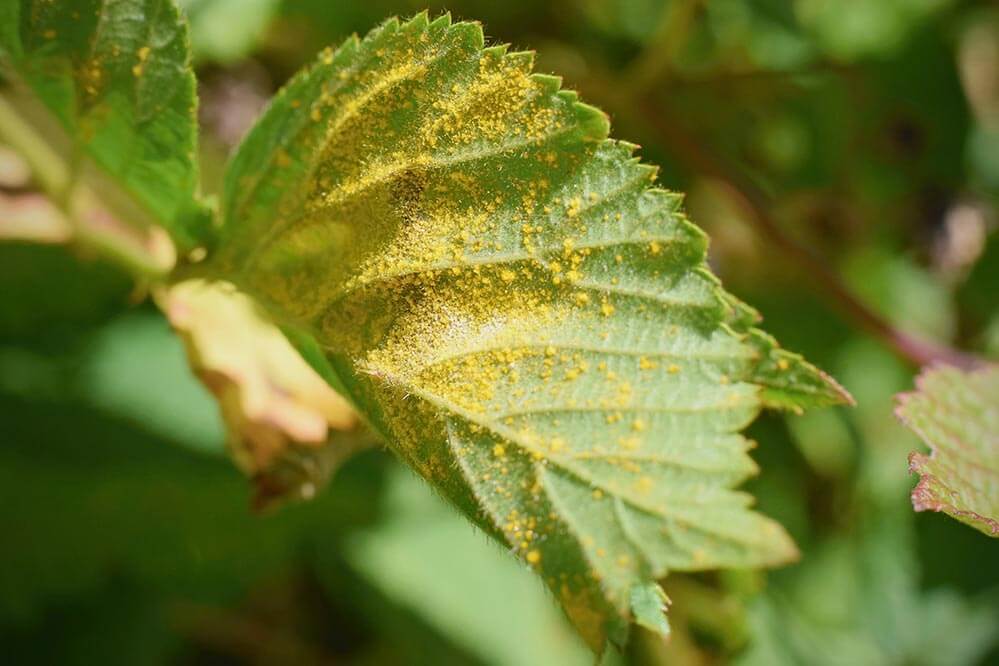
Causes & Symptoms:
Rust spores prosper in a moist environment and produce extreme amounts of spores in a short period of time; they are wind-dispersed over a large area, infecting large areas quickly.
Rust diseases cause the leaves to become distorted and the twigs to swell. Rust spots, which look similar to leaf spots, are called pustules. The pustules range from bright yellow to black in colour. The colour of the spots darkens as the plant disease matures and the seasons change. In extreme cases, the infected leaf withers and dies rapidly.
The pustules are raised, and when rubbed with a cloth, a deposit the same colour as the pustule will be seen on the cloth.
The presence of rust likely indicates an already weakened plant; it’s essential to check for other signs of diseases or infestations.
Treatment & Prevention:
Once established, rust can be one of the most challenging tree leaf diseases to control. To prevent rust from becoming established, keep trees well-watered and fertilized. Allow space between plants and trees to improve air circulation since rust thrives in damp conditions.
Remove and destroy all leaves and plant parts infected with rust. Clear debris away from underneath plants affected or most likely to be affected by rust.
Do not make the leaves into compost because the fungus overwinters on plant debris. If the plant is severely damaged, remove the entire plant to prevent them from infecting other plants of the same species.
Professional Tree Pruning and Removal
At Nature’s Shade, we are here to help you take care of your trees. Tree preservation is a top priority; a little bit of prevention can mean saving the entire tree!
Whether your tree is already infected and needs to be removed entirely, or you want to take preventative measures and clean up your trees for better circulation, Nature’s Shade professionals are trained in all things tree removal and pruning and will be there to help you from start to finish.
Visit our website or give us a call and request a FREE quote today!


